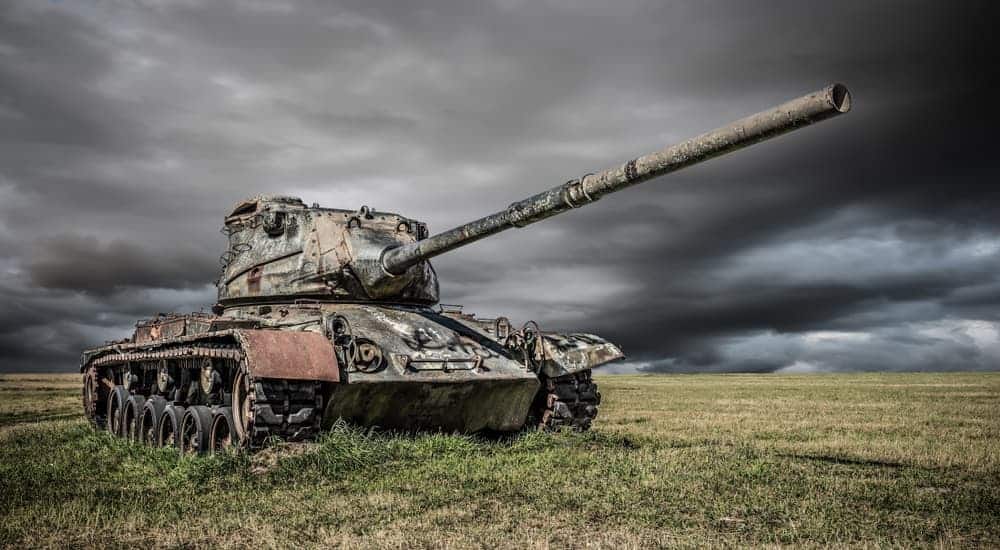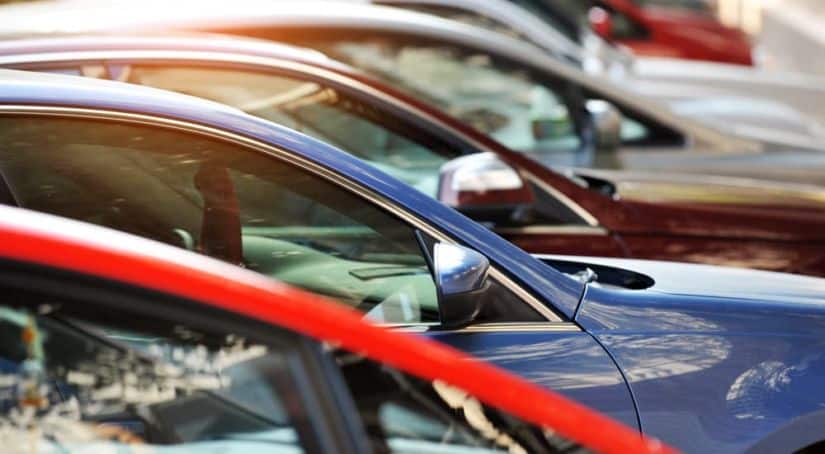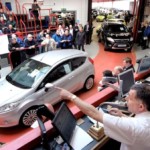It might be hard to believe, but cars and car culture have only been around for over a century. For as long as most people have been alive, cars have been part of our culture, which means car dealerships have existed; those Model T Fords had to be sold somewhere, right? But it might surprise you to know how long used car dealers have been around.
How long? Would you believe about 120 years?
It’s true. One of the first used car dealerships in the United States, the Empire State Motor Wagon Company of Catskill, NY, opened in 1898. Now, to be fair, cars themselves had only been available since about 1888. The automotive timeline looks something like this:
1880s: Karl Benz registered the first patent for the first gas-powered vehicle, the Motorwagen.
1888-1893: This car thing didn’t really catch on right away, though, as only 25 Benz vehicles were sold in a five year period.
1899: Benz expanded into France. By the end of the 19th century, Benz had manufactured 572 vehicles that year.
1903: The motorized wagon had caught on. France became the global leader in automaking, producing about 30,124 cars by year’s end.
To put this into perspective, by the time Benz had expanded from Germany into France and positioned France to become the world’s most prolific car maker, there was already a used car dealer in New York selling automobiles someone else didn’t need anymore.
Tanks for the Memories
You can’t really talk about the history of car dealerships in America, used or otherwise, without talking about World War II. World War II was a game-changer for pretty much everything about the American auto scene, from production to sales.
America’s automakers called a halt to domestic car production in February of 1942 due to the war. January 1942 marked the last gasp of civilian vehicles for the next few years, with 100,000 cars and light trucks added to the stockpile of available vehicles. A total of 520,000 cars would be available until the war ended.

But in 1942, none of the automakers were thinking about anything other than the war effort. In May of 1942 alone, 1,500 tanks rolled off the assembly lines that used to make family cars. And for the next two years, car dealerships rationed their cars to purchasers who were “essential drivers.”
Service Departments Save Car Dealerships
It was the service departments that really cemented the relationships between drivers and dealerships.
No cars, commercial trucks, or auto parts were manufactured from February of 1942 to October of 1945, so car dealerships struggled to find a place for themselves in the commercial landscape. They managed it by focusing on the other aspect of owning a car: maintenance.
In the 1940s, car dealerships went from the places you went to buy a new car to the places you went to make sure the car you had was still running.
The service departments of both new and used car dealerships not only made sure your car or truck stayed reliable, but they also served to connect the dealerships to the communities they were in.
Automakers couldn’t focus on advertising to sell new vehicles – there weren’t any extra to sell – but they could focus on advertising the friendly service and reliability of their mechanics and service professionals. After all, cars bought before the war still needed servicing.
Once the war ended and automakers switched out of wartime production and back into civilian mode, the new and used car dealerships were still positioned positively in the mind of American consumers. After all, they’d been the ones keeping America’s fleet of aging civilian vehicles running, and they’d done it with a smile.
Why the Dealership Model is a Smart Model
We’ve talked about how car dealerships survived the wartime lean years by reinventing themselves as a service, rather than a one-time big-ticket purchase, but what we haven’t talked about is why we have dealerships at all. And the reason is: because automakers were very, very smart.
When the motorized wagon was a novelty rather than a basic engine of the economy, it was easy for automakers to simply sell from their own showrooms or take custom orders. But once Henry Ford’s Model T started rolling off an assembly line that had been engineered to allow mass production in the 1920s and 1930s, there were simply too many cars for automakers to keep up with.
Enter the dealership
As a business model, the new and used car dealership is brilliant. It allows car manufacturers to do what they’re good at – design and produce cars – and sell them to individually owned dealerships, which focused on sales and service.
Car dealerships were individually owned and intrinsically local, which meant that the sales staff knew their customer base, their area of the country, and they knew what worked in that area.
The dealerships weren’t just helpful, they were also philanthropic. It wasn’t uncommon to see local baseball teams sporting jerseys with the name of the local car dealership on them. Supporting local sports and charities was another way that new and used car dealerships stayed in the good graces of the American consumer.
Used Car Dealerships – the Wave of the Future?
Car dealerships are part of the American automotive landscape, and probably always will be. While new car dealerships deal with getting the bulk of cars to consumers, the used vehicle market has just as much need for dealerships that specialize in getting cars with some miles under their belts into the hands of drivers.

But used car dealerships have unique challenges that the new car dealerships don’t. In sales, perception is half the battle.
The stereotype of the used car salesman is still a problem. If car salesmen, in general, were considered pushy, used car salesmen were synonymous with dishonesty. The cliche image of a man with slicked-back hair, an overly-bright smile, and a vaguely sinister mustache populated a lot of movies in the 1980s and 1990s.
The birth and use of excellent services like Carfax, autoDNA, and VinFreeCheck let you find out exactly what you’re buying when you purchase a used car. And if you want to spend a few minutes searching around on the internet, you can find out if the dealer you’re planning on doing business will take good care of you.
On the flip side, car dealerships that specialize in getting that shiny new current model-year car into your driveway have problems of their own. There’s wiggle room to haggle down in the price of a new car, but they’re almost always more expensive than older models.
In the 1940s, families generally had one car in the driveway, if they had one at all. Nowadays, it’s not uncommon for every member of a household to have their own car; we’re talking a minimum of two to three, and probably more. This means that there’s not just a demand for cars, but there’s a demand for affordable cars. And used car dealerships are perfectly poised to handle this market.
Used Car Dealers Now
The used car lots of yesteryear were small, full of dubiously reliable cars and haunted by smarmy, pushy salesmen. They depended on local supply for their inventory, so there weren’t a lot of choices. What you saw was what you got. They were the places you went when you were in need of an easily affordable car.
Now? Online used car dealers have become internet sensations, pulling from a national pool of cars and providing their services just as widely. They’ve become a viable, reliable alternative for affordable transportation. The easy access to reviews and dealership information online has also helped improved the shopping experience at traditional brick and mortars as well.
In the last 75 years, new and used car dealerships have changed from sales to service, and even to the convenience-based model that has glass cases of cars perched along the nation’s freeways waiting for someone to order from their stock. We can’t tell you exactly where the future of used car dealerships is headed, but you can be sure they’ll always be around to provide the same great service and selection that you’d expect from a new car dealership, just at a better price.



